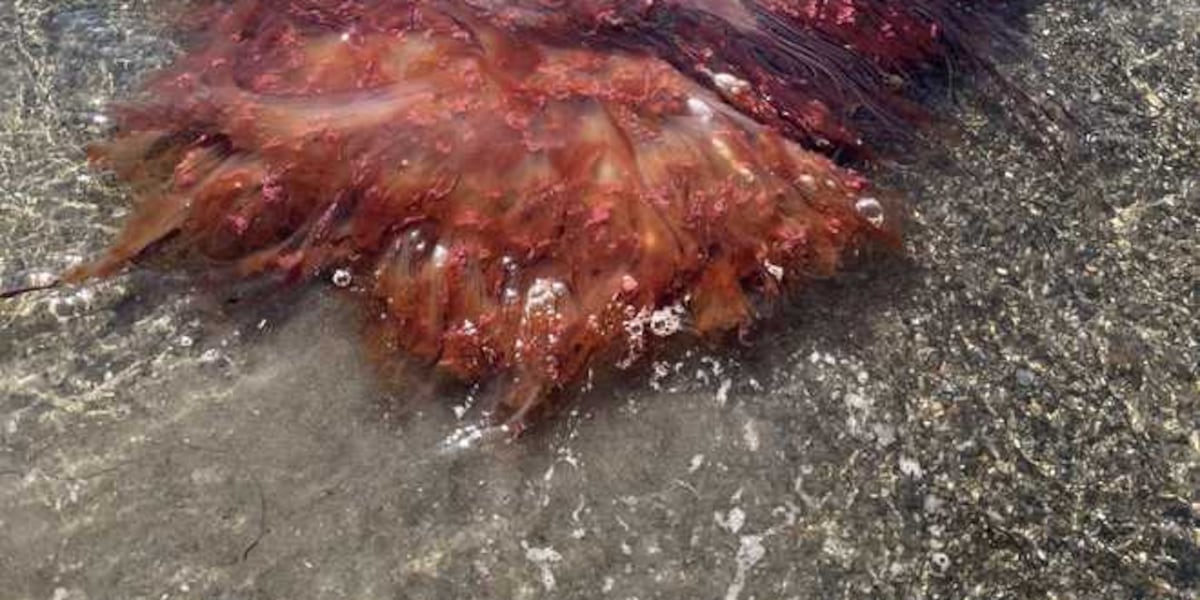SOUTH PORTLAND, Maine (WMTW) – A large lion’s mane jellyfish washed ashore in South Portland over the weekend.
City officials say the nearly 5-foot-wide jellyfish was spotted at Willard Beach, which is an exceptionally large specimen for this area.
Our media partner WMTW has also received reports of other sightings of lion’s mane jellies swimming in Maine waters over the weekend, though much smaller examples. Retired Maine’s Total Coverage Photojournalist Kevyn Fowler shared this video of one caught in a tide pool.
According to the Aquarium of the Pacific, the lion’s mane jelly is the largest sea jelly among the over 200 species that make up the class of the true jellies, Scyphozoa. The common name, lion’s mane, describes the perceived resemblance of the tentacles and their typical color to that of a lion’s mane.
Lion’s mane jellyfish are found around the world, except in tropical waters. They are most prevalent in Arctic and Antarctic waters as well as along the coasts of eastern Canada and the Pacific Northwest. However, they are also occasionally seen as far south as southern California and southern Florida.
They are common in Maine, with reports in recent years of a growing population in Maine waters. However, research scientists at the Bigelow Laboratory for Ocean Sciences in East Boothbay say there simply isn’t enough data and tracking to say for sure what trends there may be in the population.
You can help collect and report data through a joint effort of Bigelow Labs and the Gulf of Maine Research Institute by clicking here.
Bells of individuals found in the very cold Arctic and Antarctic waters can grow to 7 feet with tentacles as long as 100 feet. Lion’s mane jellies in the Northeast and Northwest United States and Canada can typically have bells reaching 20 inches and tentacles 30 feet long.
If you see one, look but don’t touch. Lion’s mane jellies do sting, though their stings are not typically deadly.
If you see one washed up, contact authorities to help get it back into the water, like a lifeguard or animal control.
Copyright 2025 WABI. All rights reserved.
